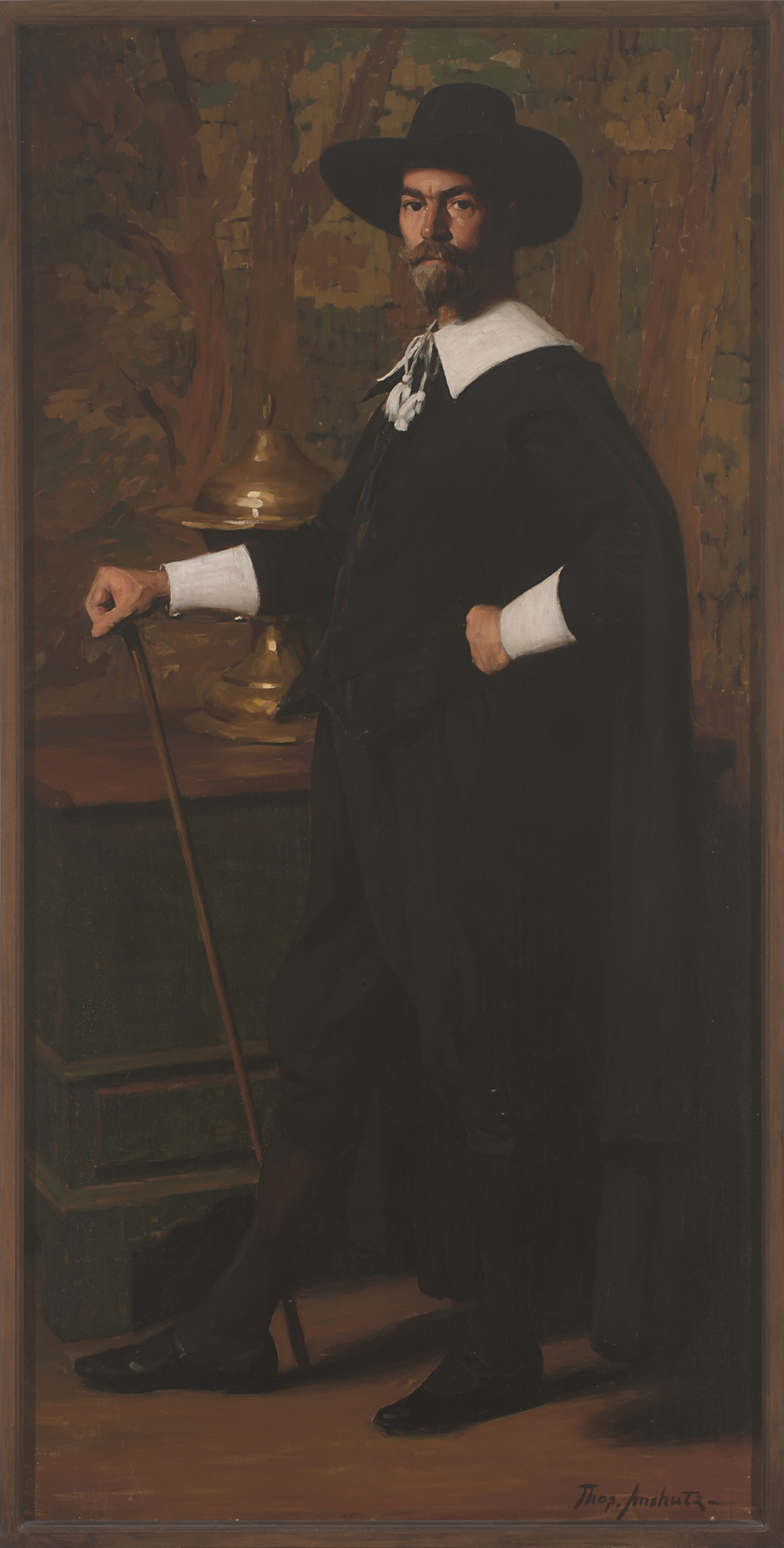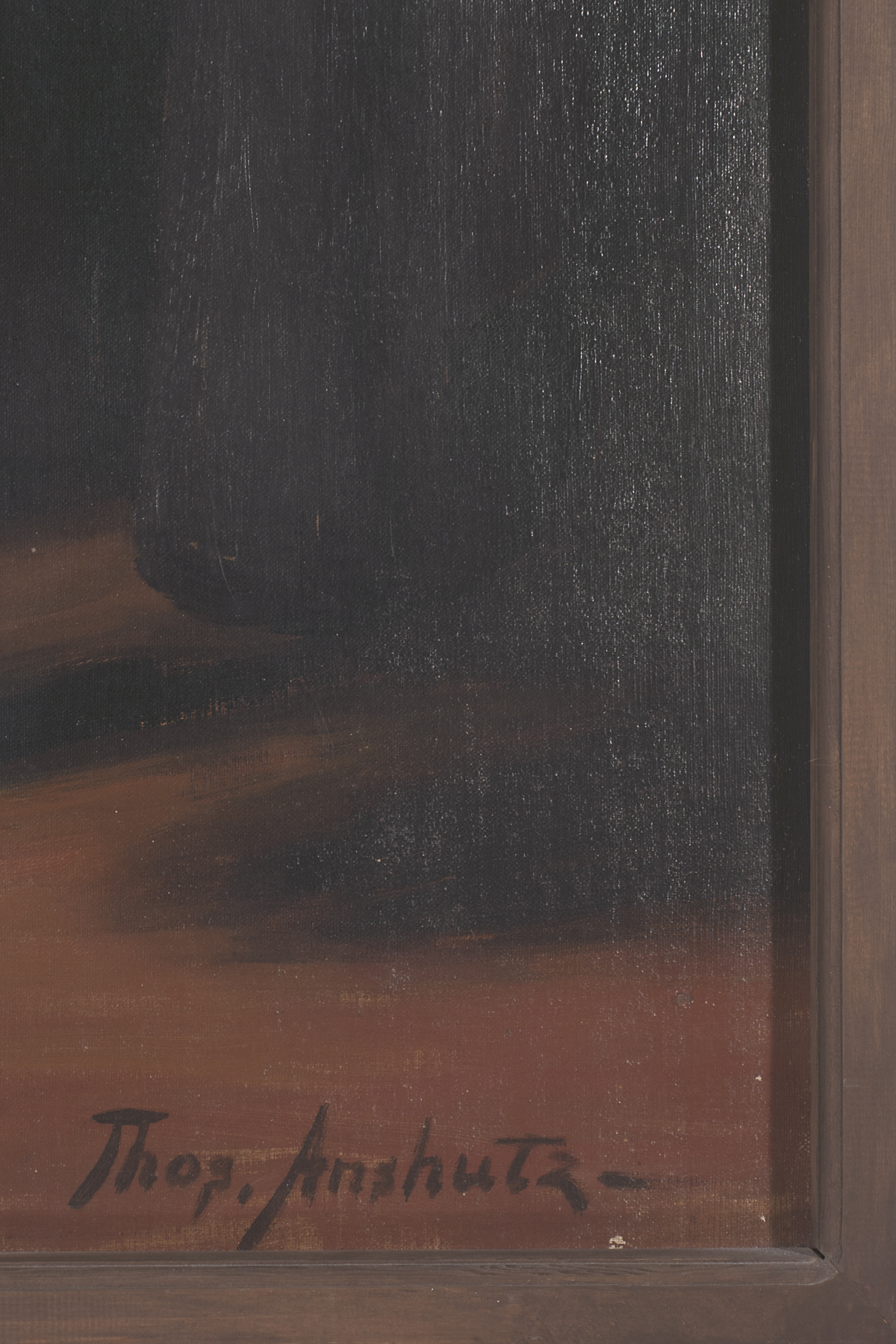Portrait of David Wilson Jordan as a Dutchman, Thomas Pollack Anshutz
Artwork Overview
Thomas Pollack Anshutz, artist
1851–1912
Portrait of David Wilson Jordan as a Dutchman,
circa 1900
Where object was made: United States
Material/technique: canvas; oil
Dimensions:
Canvas/Support (Height x Width x Depth): 203 x 101.5 cm
Canvas/Support (Height x Width x Depth): 79 15/16 x 39 15/16 in
Frame Dimensions (Height x Width x Depth): 207.5 x 105 x 6.3 cm
Frame Dimensions (Height x Width x Depth): 81 11/16 x 41 5/16 x 2 1/2 in
Canvas/Support (Height x Width x Depth): 203 x 101.5 cm
Canvas/Support (Height x Width x Depth): 79 15/16 x 39 15/16 in
Frame Dimensions (Height x Width x Depth): 207.5 x 105 x 6.3 cm
Frame Dimensions (Height x Width x Depth): 81 11/16 x 41 5/16 x 2 1/2 in
Credit line: Museum purchase
Accession number: 1971.0017
Not on display
If you wish to reproduce this image, please submit an image request






